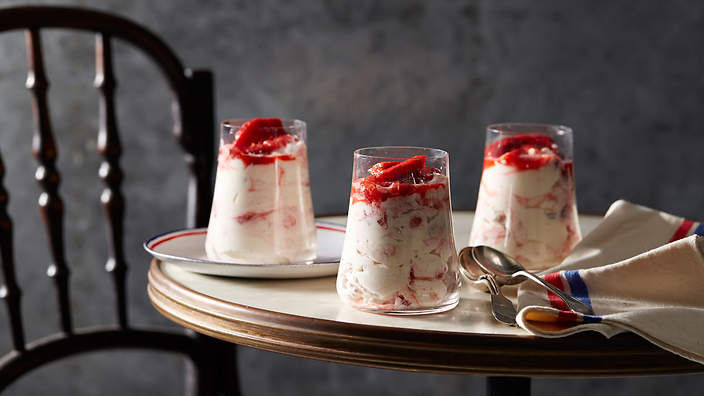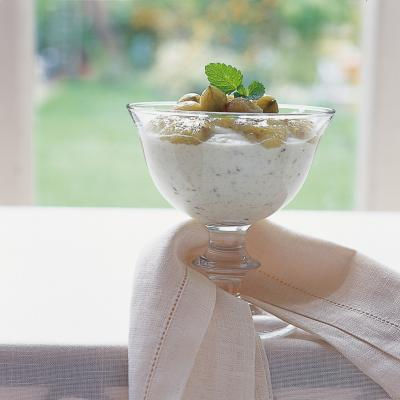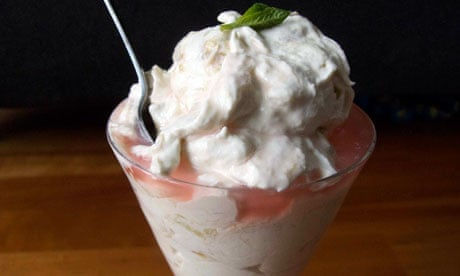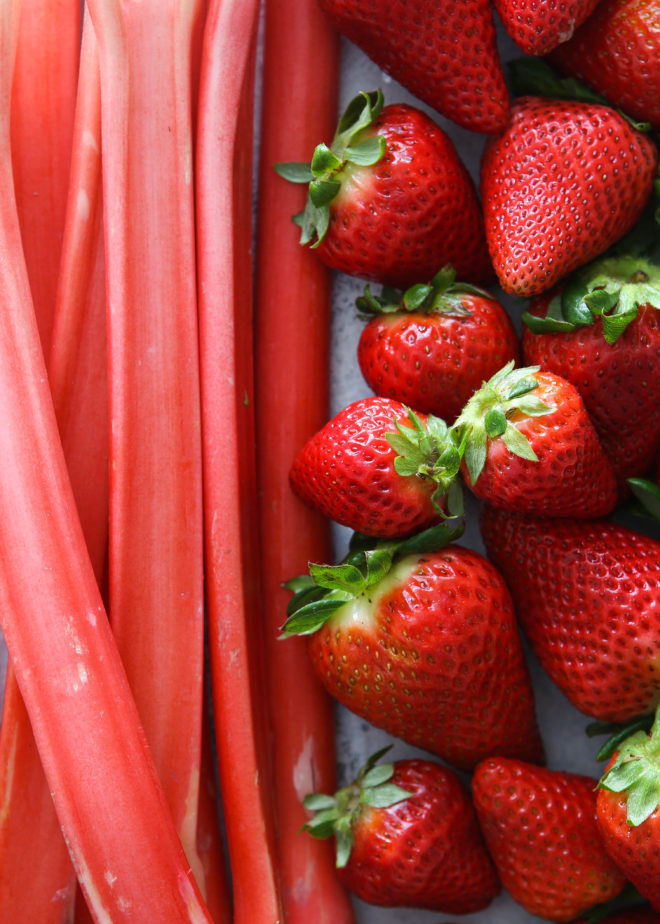Rhubarb, strawberries and fools
- rosemarydearman1
- Jul 11, 2019
- 5 min read

"The combination of strawberries and rhubarb is one of those famous and exceptional food marriages, like wine and cheese, lemon and apricot, chocolate and mint, bacon and eggs and peanut butter and jelly.
With strawberry and rhubarb, the two foods meld together so well that the result is greater than the parts. That’s because strawberries are sweet and rhubarb is tangy, so you get that classic sweet-sour combination " Jeff Cox - The Press Democrat
I have been busy the last few days and so have missed doing this blog and also, yesterday, in catching up with Taste le Tour - though I suppose I can look it up on the net. Anyway, continuing with my current series of taking inspiration for this annual event and Gabriel Gaté swan song, on day two he revisited the year that the Tour began in England and he presented a Rhubarb and Strawberry Fool as shown here.

If you go to the website by clicking on the name you can even see a video of him making it. There are two things that I thought worthy of comment here - the combination of strawberries and rhubarb, and also fruit fools.
Strawberries and rhubarb are an incredibly trendy combination. If you feed it into Google you will get hundreds of recipes - all of them looking pretty yummy - but then they are all desserts, plus jam. I tried to find when and where this craze began but drew a blank. The writer of my headline quote seems to think it's a classic thing, but I really don't think so. The nearest I could find to it was that, in England anyway, rhubarb (the finest is from Yorkshire) and strawberries appear at the same time in spring. Interestingly here in Australia one rhubarb grower seemed to think the best rhubarb was a late autumn thing - which is where Maggie Beer slots it in her seasonal tome. There's no denying that the combination of the sweet strawberries and the tart rhubarb would be a natural match though.
"The most unique thing is that it can taste so 'green' but look so pink," Ron Pfeiffer (chef)
Rhubarb that is. And also, interestingly the other thing that is often added to this particular combination is orange juice. Sometimes vanilla too. Yotam Ottolenghi is obviously a great fan. Here are three of his suggestions:
Left to right: Strawberry and rhubarb custard slice, Strawberry and rhubarb crumble cake, Vanilla custard with roasted strawberries and rhubarb
Then there is that quintessentially English dish the fruit fool.
"Fool. The very name is joyful – a childish whimsy of a pudding, all fruit and froth, which brings back memories of long days idling in the garden with an E Nesbit novel and the warm rubbery smell of a sun-bleached orange space-hopper. There's innocence in its glorious simplicity" Felicity Cloake
"soft, pale, creamy, untroubled, the English fruit fool is the most frail and insubstantial of English summer dishes". Elizabeth David

And gooseberry fool, to my mind anyway is the absolute tops. It is one of the most divine desserts I know, being basically stewed sweetened gooseberries mixed with whipped cream. The tartness of the gooseberries and the softness of the cream are indeed a match made in heaven. I used to make it at least once a year, but alas I have not seen gooseberries here for a very long time, and even when I did their season was so short that I sometimes missed it. Over there in England they are so common that people grow them in their gardens and make jam because they don't know what to do with the glut.
But gooseberry fool is not the subject of this post.
Going back to fools in general and the custard dishes that Ottolenghi obviously favours with his rhubarb and strawberry combinations it seems that originally custard was a component of a fool. And let it be said that these dishes date back centuries.
"often they were thickened with eggs as well as cream, sometimes they were flavoured with wine and spices, perfumed sugar and lemon peel.
Two hundred years ago it was those recipes listed under the heading of creams which were much more like the fruit fools of today. Evidently, at some stage, it came to be appreciated that the eggs and the extra flavourings were unnecessary, that they even distort the fresh flavour of the fruit. This is especially true of berry fruits and of apricots. Gradually the delicacy now regarded as the traditional English fruit fool came to be accepted as a purée of fruit plus sugar, fresh thick cream, and nothing more.
There was never any one method of making English fruit creams and fools, and over the past three centuries the two have fused." Elizabeth David

But it seems Nigel Slater is still hanging in there with custard. His recipe for Classic rhubarb fool is based on custard rather than cream.

Felicity Cloake though, in her attempt at the Perfect Rhubarb Fool, goes for a mix of cream and yoghurt. And these days yoghurt is often used, either on its own or in combination with cream. Delia uses it for her Gooseberry Yoghurt Fool, which is shown further up the page, for example. A recipe I have used and I can concur that it's pretty good.
We used to have gooseberry fool at home sometimes and we would never have used custard, or yoghurt, which actually was completely unknown at that time in England. We sometimes had rhubarb fool too, but not rhubarb and strawberry, and neither Felicity nor Nigel seem to think one should add strawberries.
"Rhubarb fool is a very beautiful dish - and to me the only way of making rhubarb acceptable. The brown sugar, incidentally, gives rhubarb a specially rich flavour and colour." Elizabeth David
It's a lovely and very English kind of name too isn't it? Fool I mean. Jane Grigson is interesting here on its origins - because she actually changed her mind. In Good Things she says:
"What many people don't know is that 'fool' comes from the French verb fouler, to crush; it's not a description of someone prepared to pay the price of half a pint of cream." Jane Grigson
But later, in her Fruit Book, she recants:
"I used to think that the word fool came from the French fouler, to crush. Seemed logical, as to make a good gooseberry fool the berries should be crushed rather than sieved. But I was wrong. It's a word that goes with trifle and whim-wham (trifle without the custard) - names of delightful nonsensical bits of folly, jeux d'esprit outside the serious range of the cookery repertoire. The kind of thing that women are said to favour, but that men eat more of." Jane Grigson
Which just goes to show that even those who research properly sometimes get it wrong. I think I prefer the second definition anyway.
So go for it with rhubarb and strawberries. Mix with cream and something crunchy and you have perfection.
"Time after time, the most satisfying fruity puds follow this neat formula: sweet-tart fruit, starchy, crisp or crunchy carbohydrate and a luscious, creamy dollop on top (or underneath. Or even in the middle). It's a tremendously treaty trinity that seems to satisfy every sense, with each element pointing up the sheer loveliness of the others." Hugh Fearnley-Whittingstall
Here are two that follow that formula. The first one is from a 'healthy' website and therefore has things like cornstarch and canola oil in it, but I'm sure you could substitute if you want. The other just looked so pretty. The filling is an uncooked custard - what is that I wonder?, but you could substitute a cooked one, or cream, or yoghurt ...

"strawberry and rhubarb does something for the soul."
Alison Spiegel - The Huffington Post






















Comments